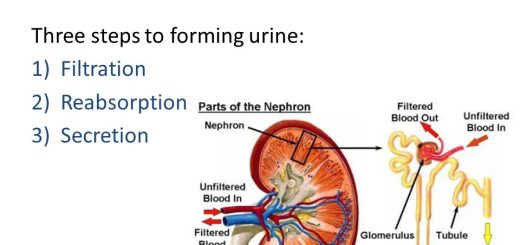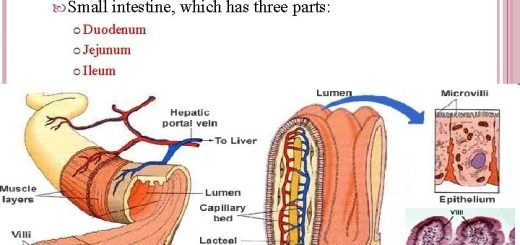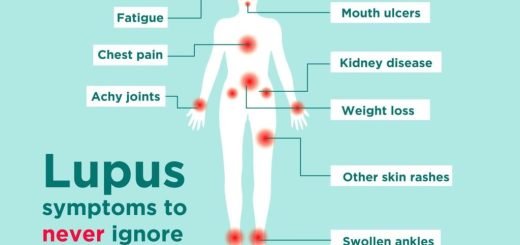Bone (Osseous Tissue) types, structure, function and importance
Bones have many vital functions in your body, they offer a rigid framework as well as support for other parts of your body. they transmit the force of muscle contractions. they protect many of your internal organs. Bones offer a framework for the attachment of muscles and other tissues. Bones allow body movements by acting as levers and points of attachment for muscles.
Bone (The Osseous Tissue)
Bone is a specialized type of connective tissue characterized by being hard and supportive due to its calcified matrix rich in collagen fibers.
Functions of Bone
- Locomotion by giving attachment to the different body muscles.
- Protection of the vital organs e.g. the brain inside the skull, the heart inside the thoracic cage, and myeloid tissue inside bone marrow cavities.
- Metabolic function by acting as a reservoir for calcium, phosphate, and other minerals.
Histological structure of bone
The bone matrix
It is produced by bone cells. Bone matrix is composed of:
- Water constitutes about 25% of the bone weight. It permits the exchange of minerals between blood and matrix.
- Inorganic component constitutes about 45% of the bone weight. It is mainly in the form of calcium phosphates (in the form of hydroxyapatite crystals) and calcium carbonates. Few other ions are found e.g. sodium, magnesium, and ferrous. It is responsible for the hardness of bone.
- Organic component constitutes about 30% of the bone weight. It includes: Type I collagen fibers are responsible for the eosinophilic staining of bone matrix in H & E sections. These are embedded into; Ground substance formed of proteoglycans and adhesive glycoproteins e.g. osteonectin which anchors collagen to the inorganic matrix.
The bone coverings
The periosteum covers the external surfaces of bone. It is similar to the perichondrium, formed of two layers:
- The outer fibrous layer: formed of dense collagen fibers with few blood vessels and connective tissue cells.
- The inner vascular and cellular layer: containing the osteogenic cells (osteoprogenitor cells and osteoblasts) which are capable of forming new bone during growth and repair.
The endosteum lines the internal surfaces of bone (bone marrow cavities). It is formed only of the cellular layer of osteogenic cells and blood vessels.
The bone cells
There are four types of bone cells:
- Osteoprogenitor cells (mother cells of bone).
- Osteoblasts (the bone-forming cells).
- Osteocytes (the unit bone cells).
- Osteoclasts (the bone macrophages or the bone-eating cells).
Osteoprogenitor cells
They arise from undifferentiated mesenchymal cells (UMCs) in the connective tissue.
Sites:
- The cellular layer of the periosteum.
- Endosteum.
- Lining the Haversian canals.
LM picture: they are small, spindle-shaped cells with an oval nucleus and pale basophilic cytoplasm. EM picture: the cytoplasm shows few organelles, mainly polysomes.
Function: whenever there is an initiated bone formation (e.g. during growth or healing of bone fractures) the osteoprogenitor cells proliferate by mitosis and differentiate into osteoblasts.
Osteoblasts
They arise from osteoprogenitor cells. They present in the same sites as osteoprogenitor cells. EM picture: osteoblasts show the ultrastructure of cells actively synthesizing proteins for constitutive secretion.
LM picture: they are cuboidal or columnar in shape and are arranged in one row (resembling the simple epithelium), attached by short processes. The active osteoblast has an eccentric euchromatic nucleus and deep basophilic cytoplasm with a negative Golgi image near the nucleus.
Function: active bone formation by;
- Secretion of the osteoid tissue which is the organic component of the bone matrix (not yet calcified) between the osteoblasts layer and the older bone matrix.
- Secretion of alkaline phosphatase enzyme, which is essential for the deposition of calcium salts from the blood into the bone matrix (bone mineralization).
- The active osteoblast is entrapped by its own secretion (the calcified matrix) in a small cavity (lacuna) and it is now referred to as osteocyte.
Osteocytes
Origin: from osteoblasts; when entrapped within the lacunae and they transform to osteocytes. Sites: present inside lacunae within the bone matrix. LM picture: osteocytes are flattened cells with many processes. The osteocyte has a deeply-stained nucleus and pale basophilic cytoplasm.
EM picture: the osteocyte is characterized by:
- Its nucleus is more heterochromatin than that of osteoblast.
- The cytoplasm shows moderate amounts of organelles.
- Osteocytes are present within lacumnae which are small cavities in the bone matrix.
- Their long cytoplasmic processes are present within minute spaces in the bone matrix called canaliculi.
- The lacunae and canaliculi communicate with each other.
- The cytoplasmic processes of neighboring osteocytes are connected via gap junctions.
Function: osteocyte is less active than the osteoblast; they are responsible for the maintenance of the bone matrix. Nutrition of osteocytes: since they are surrounded by a calcified matrix, nutrition cannot reach osteocytes by diffusion. These cells are nourished by:
- A small amount of extracellular fluid in the lacunae and canaliculi surrounding the osteocytes and their processes. This fluid carries nutrients and metabolites from the neighboring blood vessels to the osteocytes.
- Gap junctions between the processes of adjacent osteocytes allow the transport of ions and small molecules from cell to cell.
Osteoclasts
They originate from the blood monocytes (members of the mononuclear phagocyte system), migrate to the bone, fuse together and differentiate into osteoclasts. Sites: as a result of osteoclasts activity they lie within shallow depressions in the bone matrix known as the resorption bays or Howship’s lacunae.
LM picture: osteoclast is a multinucleated giant cell that may contain up to 50 dense nuclei. It has a deeply eosinophilic vacuolated cytoplasm. The osteoclast is motile with an irregular outline.
EM picture: osteoclast has two surfaces (cell functional polarity); a smooth surface and a ruffled surface, towards the area of bone resorption, with many irregular projections separated by narrow clefts. The cytoplasm contains abundant mitochondria, well-developed Golgi apparatus, and a large number of lysosomes with vesicles and vacuoles.
Function of Osteoclasts
Osteoclasts are found at sites where bone resorption is taking place. Their activity is controlled by local signaling factors and hormones. The process of bone resorption involves local digestion of matrix protein and dissolution of hydroxyapatite by secretion of acid phosphatase enzyme. Removal of the cartilaginous matrix or the mesenchymal tissue, to be replaced by bone during the stages of osteogenesis.
Supporting connective tissue, Cartilages function, structure, types & growth
Types of bones, Histological features of compact bone & cancellous bone
Bones function, types & structure, The skeleton & Curvature of Spine in Adults
Importance of Anatomical body position, planes & terms of movement
Joints types & function, Nerve supply of joints & general features of Synovial Joints













